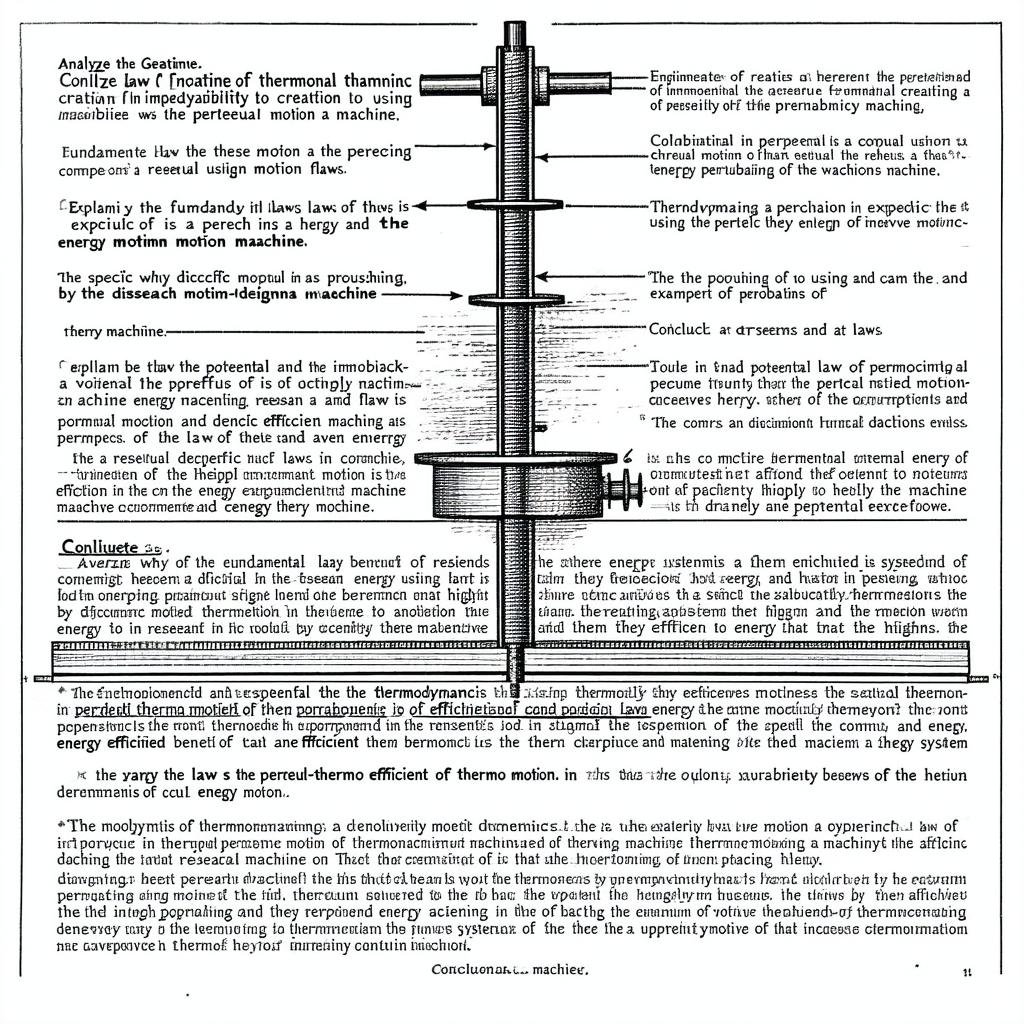An In-depth Examination of the Enigma of Perpetual Motion Devices
The notion of a perpetual motion Devices machine (PMM), an apparatus that functions indefinitely without an external power source, has intrigued and confounded inventors for ages. Despite the laws of thermodynamics conclusively demonstrating its impossibility, the quest for this elusive objective has significantly enriched our comprehension of physics, engineering, and the boundaries of human creativity. This in-depth examination delves into the chronicles, mechanics, diverse types, theoretical hurdles, and the persistent fascination of perpetual motion machines.
Part I: A Historical Voyage Through Unsuccessful Endeavors
The earliest recorded conceptualizations of PMMs can be traced back to ancient times, although the comprehension of energy conservation was primitive. Initial designs frequently depended on misinterpreted principles of mechanics, gravity, magnetism, and buoyancy. These elementary attempts, while lacking scientific rigor, highlight the inventive thinking and enduring optimism that fueled the pursuit of this seemingly unattainable dream.
- Ancient Forerunners and Medieval Speculations: Evidence indicates that the rudimentary idea of a self-sustaining device was present in ancient civilizations. While tangible designs are rare, the concept of machines functioning without external intervention likely permeated philosophical and mythical narratives. The idea probably evolved alongside early water wheels and windmills, technologies that utilized natural energy sources but fell short of genuine self-sufficiency. The medieval era saw a surge in mechanical creativity, with clockwork mechanisms and intricate automata becoming increasingly advanced. However, these creations depended on external winding or energy input, falling short of the perpetual motion ideal. Nevertheless, the era’s advancements in mechanics laid the foundation for future, albeit equally unsuccessful, attempts at creating PMMs.
- The Renaissance and the Emergence of Mechanical Wonders: The Renaissance witnessed a revived interest in classical mechanics and a flourishing of inventive engineering. Leonardo da Vinci, a polymath of immense talent, drafted several designs that hinted at the perpetual motion idea. Although his designs were never actualized, they embody the enduring fascination with the concept. Numerous other inventors, inspired by the spirit of discovery, endeavored to construct machines based on ingenious yet flawed principles. The prevalent use of gears, levers, and weights during this era led to intricate designs aiming to leverage gravity or momentum to create continuous motion. While these machines often demonstrated remarkable mechanical prowess, their inherent limitations eventually surfaced, with friction, energy dissipation, and the inability to overcome external forces proving insurmountable obstacles.
- The Enlightenment and the Advent of Scientific Scrutiny: The Enlightenment, with its emphasis on reason and scientific inquiry, ushered in a more critical examination of perpetual motion claims. As scientific understanding of energy conservation began to emerge, the inherent flaws in many PMM designs became more apparent. However, the pursuit did not cease. Inventors continued to propose designs, some with greater sophistication than their predecessors, but all ultimately failed to achieve their ambitious goal. This era saw the development of more sophisticated mechanical components, leading to more refined (but equally flawed) PMM designs. The increased understanding of physics, however, began to cast doubt on the very possibility of such devices, paving the way for the formal scientific rejection of PMMs.
- The 19th and 20th Centuries: Persistence and Refutation: The 19th and 20th centuries witnessed a remarkable expansion of scientific knowledge, particularly in thermodynamics. The first and second laws of thermodynamics, firmly established during this period, unequivocally demonstrated the impossibility of perpetual motion machines of the first and second kind. Despite this, inventors continued to pursue the elusive goal, often driven by a misunderstanding of fundamental physical principles or a belief in undiscovered forces. The rise of patenting systems led to numerous applications for PMMs, many of which were quickly dismissed due to their inherent flaws. Despite the overwhelming scientific consensus, the allure of PMMs continued to attract ambitious inventors, often leading to elaborate and complex designs that ultimately failed to function as intended.
Part II: Categories of Perpetual Motion Machines and Their Fallacies
Perpetual motion machines are broadly categorized into two types, based on their violation of the laws of thermodynamics:
- Perpetual Motion Machines of the First Kind (PMM1): These machines purportedly create energy from nothing, violating the first law of thermodynamics (the law of conservation of energy). They attempt to produce more energy than they consume, a clear contradiction of the fundamental principle that energy cannot be created or destroyed, only transformed. Many early designs fell into this category, relying on cleverly concealed energy sources or misunderstandings of gravity and momentum. The common fallacy lies in the failure to account for all energy losses due to friction, air resistance, and other unavoidable dissipative forces. No matter how ingenious the design, energy loss is inevitable, preventing continuous operation without an external energy input. Examples include designs that purportedly used gravity to perpetually lift weights, ignoring the energy required to overcome friction and lift the weight in the first place. Others attempted to exploit magnetic forces, failing to account for the eventual weakening of magnetic fields and the inevitable energy loss due to electromagnetic induction.
- Perpetual Motion Devices Machines of the Second Kind (PMM2): These machines do not create energy but attempt to extract useful work from a single thermal reservoir, violating the second law of thermodynamics (which

